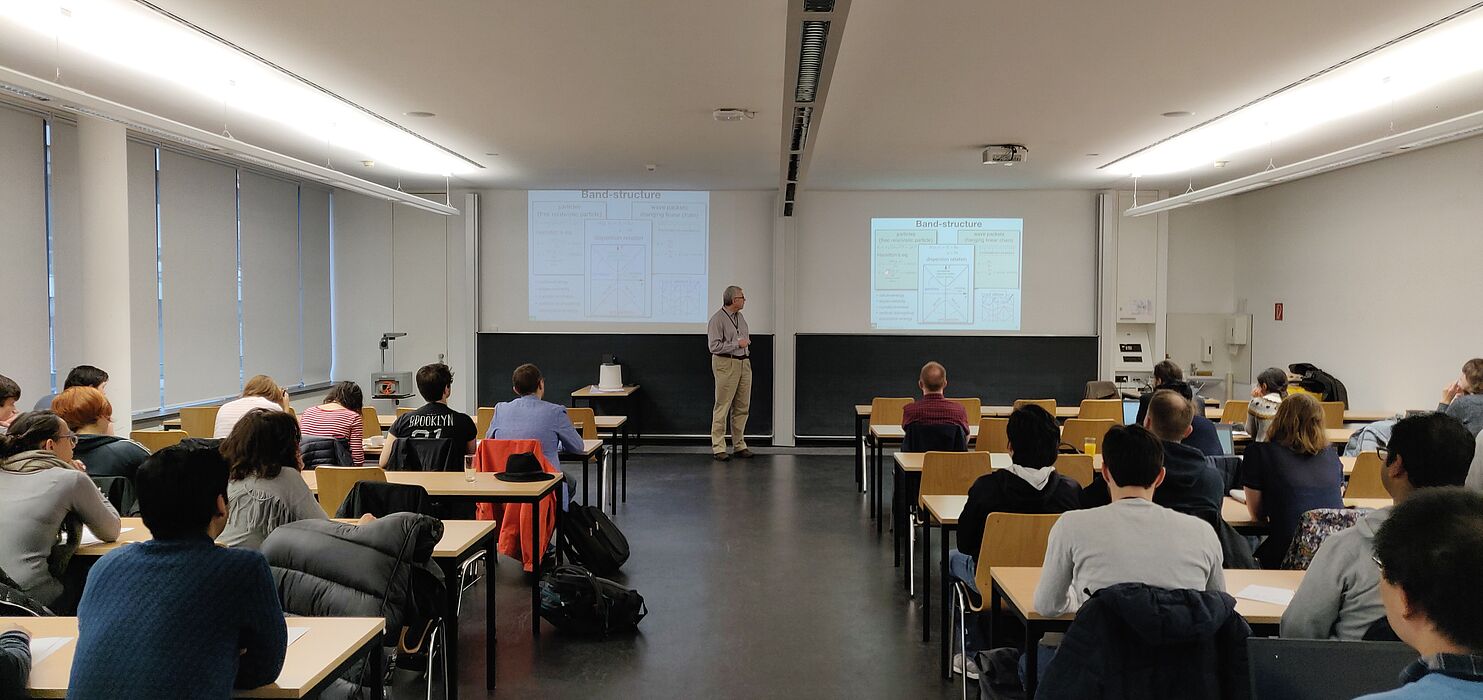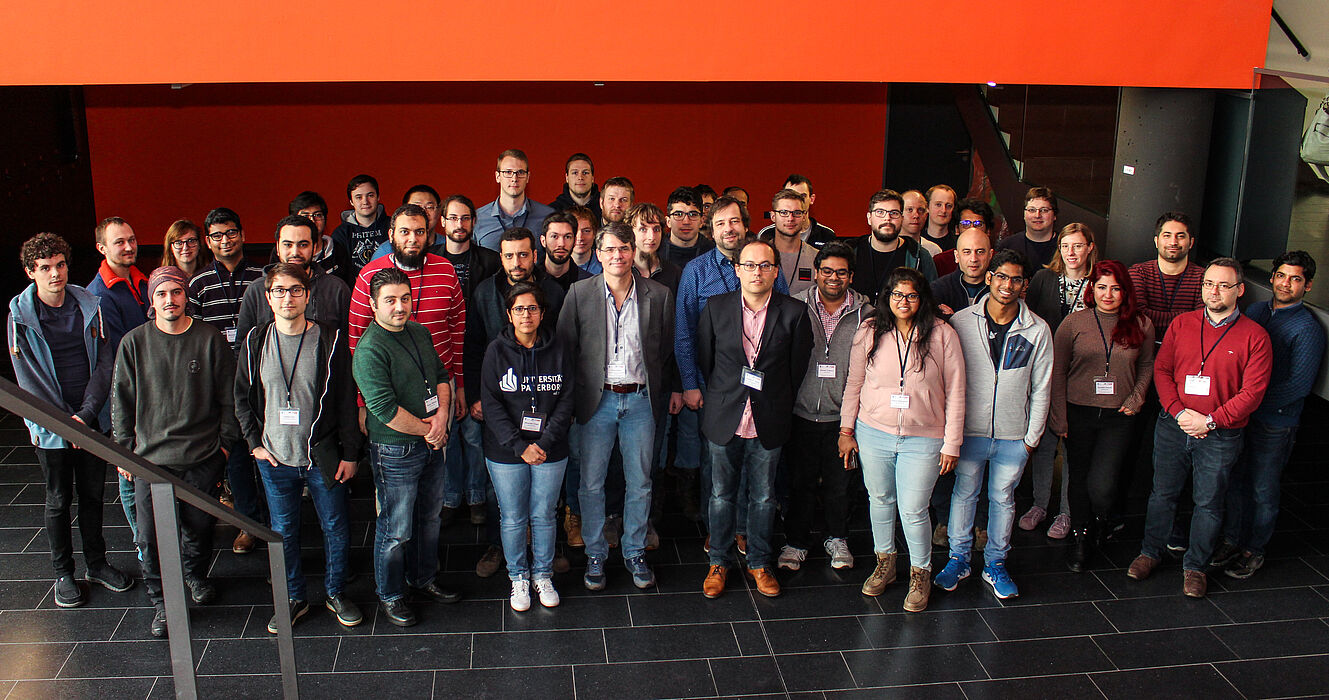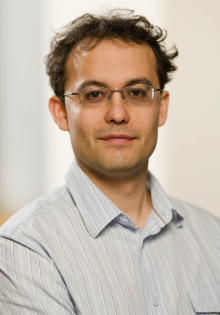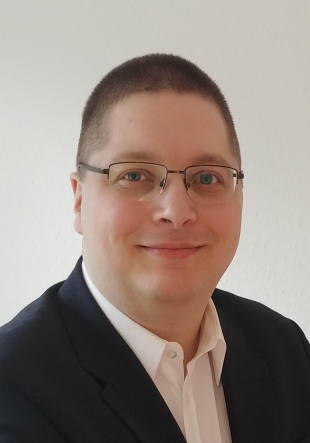News article in German at the main University page: https://www.uni-paderborn.de/nachricht/93141/
English Version:
From Monday, February 10th to Friday, February 14th, the Paderborn Center for Parallel Computing (PC²) and the Chair for Dynamics of Condensed Matter at Paderborn University organized an international winter school on electronic structure calculations.
Electronic structure calculations are calculations that can be used to predict and understand the distribution of electrons in solids and molecules. These are necessary for many types of atomistic calculations in chemistry and physics, in which the main focus is on the movement of the atoms and which are essential, for example, for the development of novel or improved materials or technological processes for battery applications or photovoltaic energy conversion.
Atomic simulations are a focus of the research at Paderborn University and Paderborn Center for Parallel Computing (PC²). With past events, such as the CP2K user tutorial "Computational Spectroscopy", this winter school and future initiatives and training courses the scientific community in the area of the atomistic simulations is supported by the PC² and Paderborn university. In addition, the scientific consultation at PC² also provides experts who individually support researchers with technical and application-related questions.
The aim of this week-long winter school was to bring together doctoral students, postdocs and other researchers from the field of quantum chemistry and solid-state physics who need computer-assisted atomistic calculations of molecules and solids for their research and want to extend their knowledge of the programs used, such as ORCA, CP2K, and CP-PAW. The audience was international: in addition to participants from many German universities and research institutions, participants from Belgium, Chile, India, Italy, Norway, Sweden, Switzerland, South Africa or the Czech Republic were also present.
The basic structure of the winter school consisted of lectures by experts on methods of computational quantum chemistry and theoretical solid-state physics, such as Prof. Dr. Frank Neese, Director of the Max Planck Institute for Coal Research and main responsible for the widespread quantum chemistry program ORCA, Prof. Dr. Thomas D. Kühne from Paderborn University, who is an expert in ab-initio molecular dynamics simulations and co-developer of the CP2K program, and Prof. Dr. Peter E. Blöchl from Clausthal University of Technology, the main developer of the CP-PAW program and inventor of the projector augmented wave method, one of the most-cited publications in physics.
These lectures were in turn supplemented by specific lectures on the correct and efficient use of the individual programs ORCA, CP-PAW, and CP2K. In order to give the participants the opportunity to apply and deepen the new theoretical foundations from the lectures, about half of the winter school consisted of tutorials in which the participants had to solve prepared tasks with the three programs presented. They were supported by tutors, who are among the main developers of the simulation software packages presented.
The sometimes very complex calculations were carried out on the high-performance computer Noctua at PC². In addition, the participants presented their own scientific research topics and results as part of a poster session, which led to a lively scientific exchange.
The unconventional basic idea of the school to work with several programs so that both molecular chemistry (with ORCA and CP2K) and solid-state physics (with CP2K and CP-PAW) were covered with different methods and levels of theoretical description was very welcomed by the participants. This also shows the growing overlap and exchange between quantum chemistry and theoretical solid-state physics, as well as the increasing importance of numerical calculations, which have to be included in new event formats in order to equip researchers for cutting-edge research. The now successfully conducted winter school represents a further step in this direction.
Paderborn Center for Parallel Computing (PC²) and the Dynamics of Condensed Matter Group of Paderborn University are organizing a winter school on electronic structure calculations. In this school, you will learn how to perform efficient electronic structure calculations as well as ab-initio molecular dynamics calculations for molecules and solids.
The school contains lectures from experts in the corresponding methods and codes as well as hands-on tutorials.
The three codes
- ORCA (https://orcaforum.kofo.mpg.de),
- CP-PAW (http://www2.pt.tu-clausthal.de/atp/index.html) and
- CP2K (https://www.cp2k.org) will be used in the tutorials.
Date and Location
-
Date: 10-14 Febrary 2020
-
Place: Paderborn University, L 3.204, map
Details
Details can be found at the website of the school.




